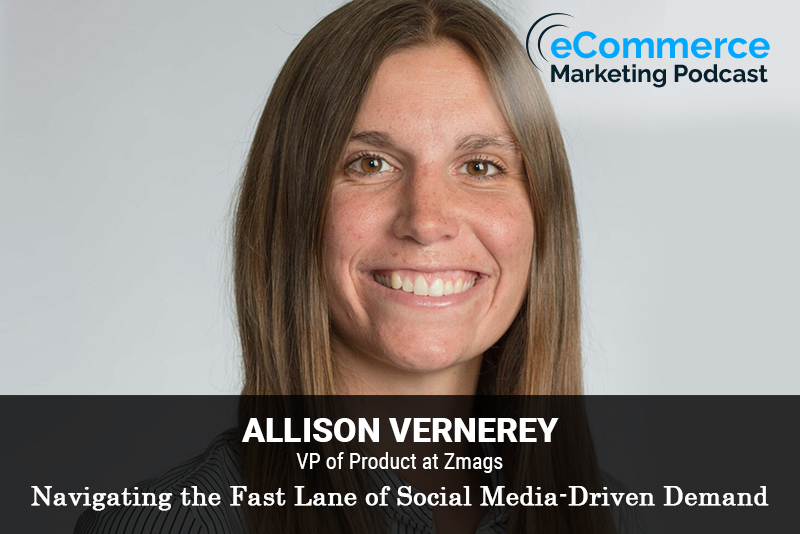
The eCommerce Marketing Podcast walks you through everything that goes into ecommerce marketing — from inbound marketing to paid advertising to conversions. Learn the strategies top marketing experts use to grow their businesses.
Allison Vernerey works as a Vice President, Product at Zmags. Previously, she held positions at The Home Depot and Decathlon. Allison graduated from Duke University and is currently based in Boston, United States.
In this episode, you will learn
Which social media platforms are known for their rapidly shifting trends and how can eCommerce marketers stay ahead of these trends to maximize their results?
What is the most significant impact social media has had on consumer demand, and how can eCommerce companies leverage this to their advantage
How important it is for eCommerce businesses to be active and responsive on social media platforms
The role of AI and machine learning evolving in the context of eCommerce and managing social media-induced demand
How the future of eCommerce may be influenced by social media platforms and consumer demands arising from them
For show transcript and past guests, please visit https://www.ecommercemarketingpodcast.com
Or on YouTube at:
https://www.youtube.com/channel/UC3PgT0NOGzpdPGQtBK0XLIQ
Follow Arlen:
Twitter: https://twitter.com/askarlen
Facebook: https://www.facebook.com/arlen.robinson.7
Instagram: https://www.instagram.com/arlenyohance/
LinkedIn: https://www.linkedin.com/in/arlenrobinson/
Past guests on the ecommerce marketing podcast include Neil Patel, Nemo Chu, Luke Lintz, Luke Carthy, Amber Armstrong, Kris Ruby and many more.
Thanks for listening. Be sure to subscribe and leave a review.

Title: Staying Ahead of Social Media Trends in E-Commerce with Allison Vernerey
Guest: Allison Vernerey, Vice President of Product at Zmags
Host: Arlen Robinson
In this episode of the Ecommerce Marketing Podcast, host Arlen Robinson speaks with Allison Vernerey, Vice President of Product at Zmags, about how e-commerce marketers can keep up with the rapid pace of social media-induced consumer demand. Allison shares her extensive experience in retail and e-commerce and provides practical tips for navigating social media trends.
Key Takeaways:
- [3:30] Allison’s Background:
- Allison’s journey from retail store floors to e-commerce and product management at companies like Home Depot and Zmags.
- [6:20] Impact of Social Media Trends:
- How to determine which social media platforms are right for your brand and the importance of understanding your target audience.
- [11:45] Influencer Culture’s Impact:
- The shift in power to influencers and the importance of leveraging this trend to reach new audiences and react to unexpected trends.
- [17:00] Managing Social Media Presence:
- Tips on how active and responsive businesses should be on social media platforms, emphasizing quality over speed and setting clear expectations.
- [24:40] Role of AI in Social Media Management:
- The potential of AI and machine learning to automate tasks, manage posts, and provide first-level customer responses while maintaining the human element in social interactions.
- [30:15] Future of E-Commerce and Social Media:
- The importance of being nimble and ready to react to unexpected trends, as well as maintaining a seamless customer journey from social media to the e-commerce site.
- [37:50] Case Study:
- A discussion on the importance of being prepared for viral trends and ensuring that e-commerce sites reflect current social media trends to avoid missed opportunities.
Guest Info:
- Allison Vernerey
- Vice President of Product at Zmags
- LinkedIn: Allison Vernerey
- Website: Zmags











